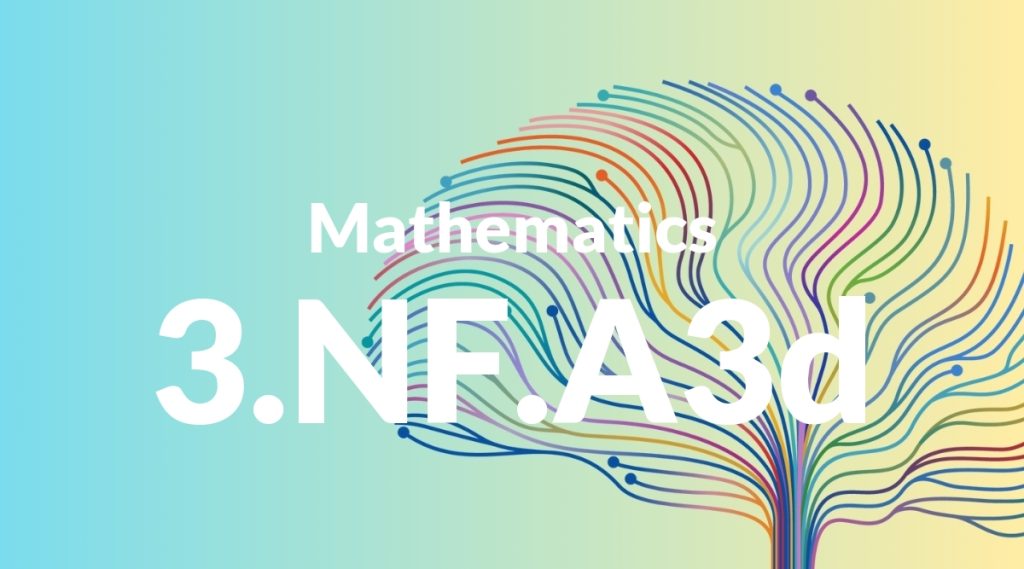Standard: 3.NF.A3d – Compare two fractions with the same numerator or the same denominator by reasoning about their size. Recognize that comparisons are valid only when the two fractions refer to the same whole. Record the results of comparisons with the symbols >, =, or <, and justify the conclusions, e.g., by using a visual fraction model.
Grade level: Grade 3
Subject: Mathematics
Domain: Numbers & Operations – Fractions
Teacher Overview
This standard focuses on comparing fractions with the same numerator or the same denominator by reasoning about their size. It’s crucial for students to understand that comparisons are valid only when the fractions refer to the same whole. This foundational skill sets the stage for more advanced operations with fractions in later grades. Students should be familiar with the basic concept of fractions as parts of a whole and should be able to identify and represent fractions using visual models.
After mastering this standard, students will be able to perform operations with fractions and compare fractions with different denominators, further enhancing their numerical reasoning skills.
Common Misconception 1
A common misconception is that fractions with larger denominators are always larger. This is incorrect because a larger denominator means the whole is divided into more parts, making each part smaller.
Intervention 1
To address this, use visual fraction models to show that a fraction with a larger denominator represents smaller parts. For example, compare 1/4 and 1/8 using pie charts.
Common Misconception 2
Another misconception is that fractions can be compared directly without considering the whole they refer to. This leads to incorrect comparisons.
Intervention 2
To correct this, emphasize the importance of comparing fractions that refer to the same whole. Use consistent visual models to illustrate this concept.
Prerequisite Knowledge
Students should understand the concept of fractions as parts of a whole and be able to identify and represent fractions using visual models.
Subsequent Knowledge
Students will develop the ability to perform operations with fractions, such as addition and subtraction, and will extend their understanding to include fractions with different denominators.
Instructional Activities
- Use fraction strips to compare fractions with the same numerator.
- Create visual models of fractions using pie charts or bar models.
- Engage students in real-world scenarios, such as comparing slices of pizza or pieces of chocolate.
- Conduct fraction comparison games where students record results using >, =, or < symbols.
- Have students justify their fraction comparisons through written explanations or oral presentations.




